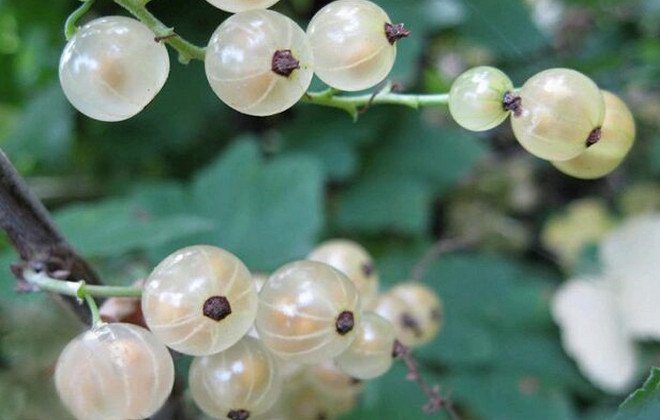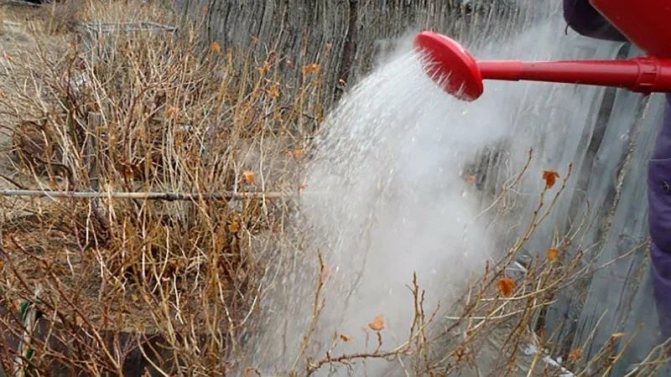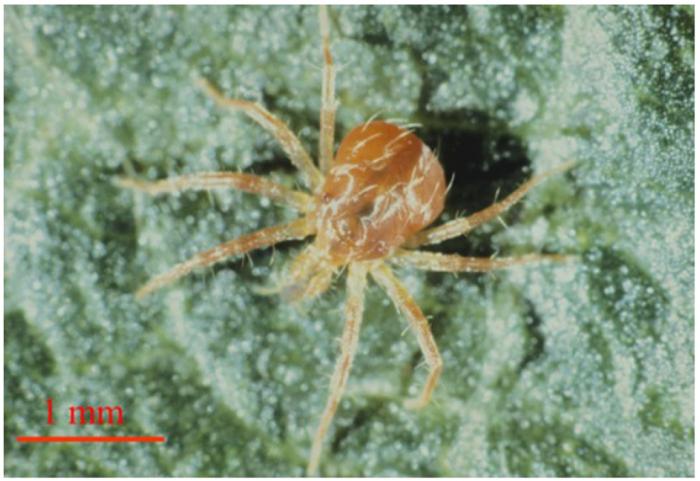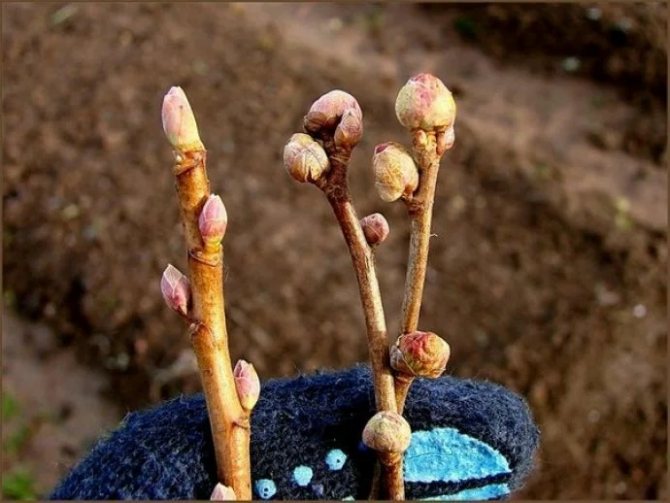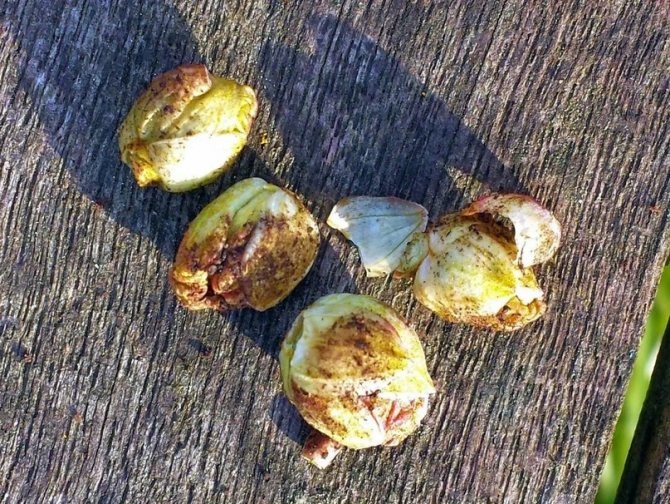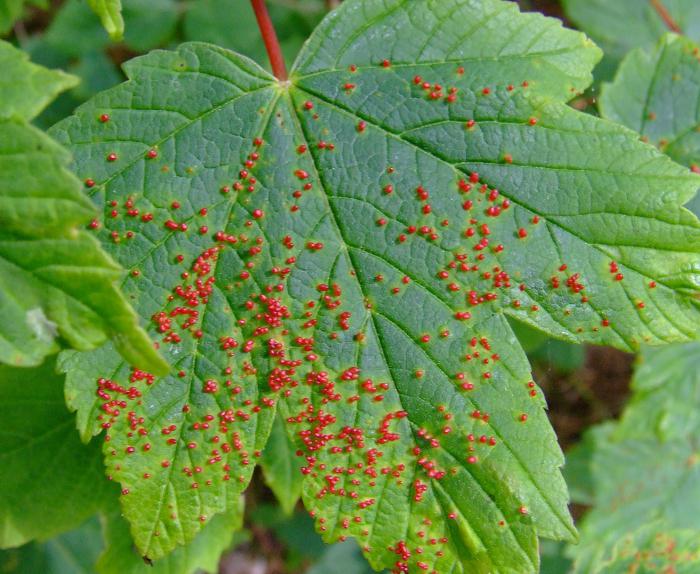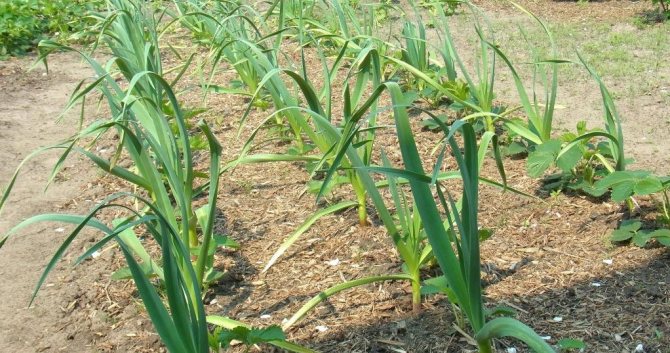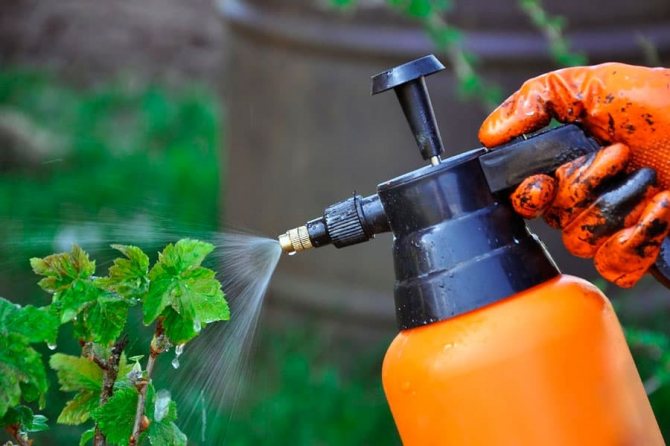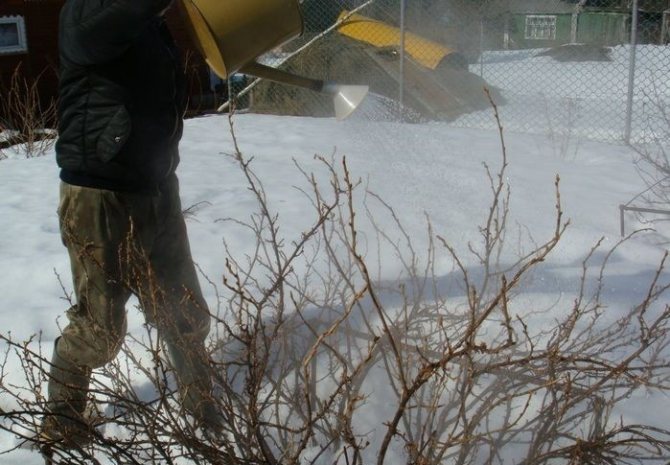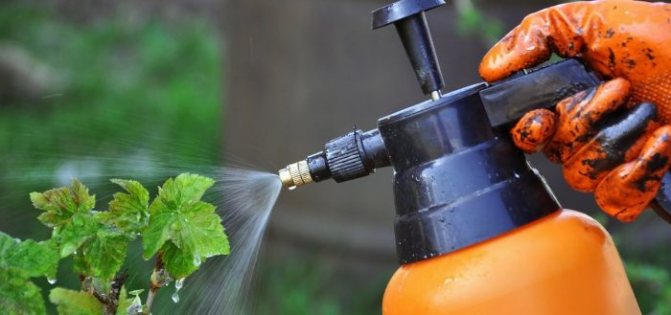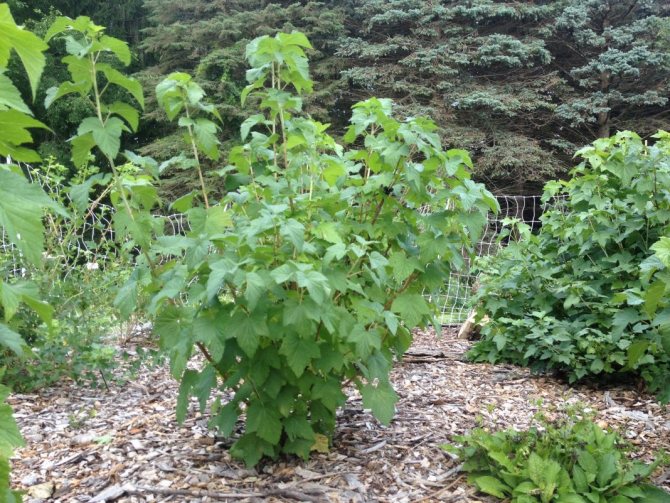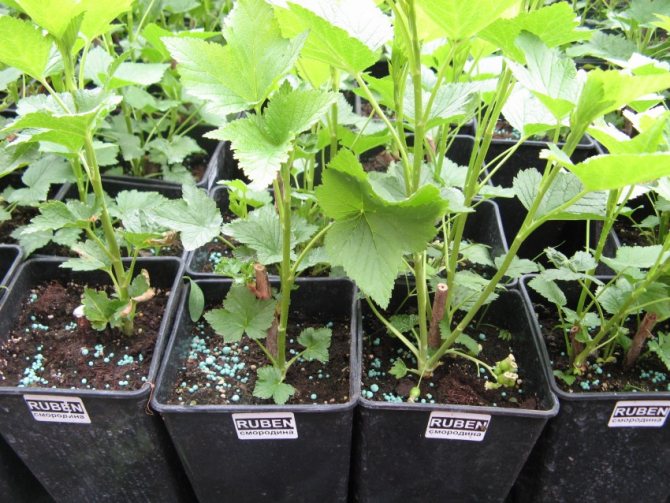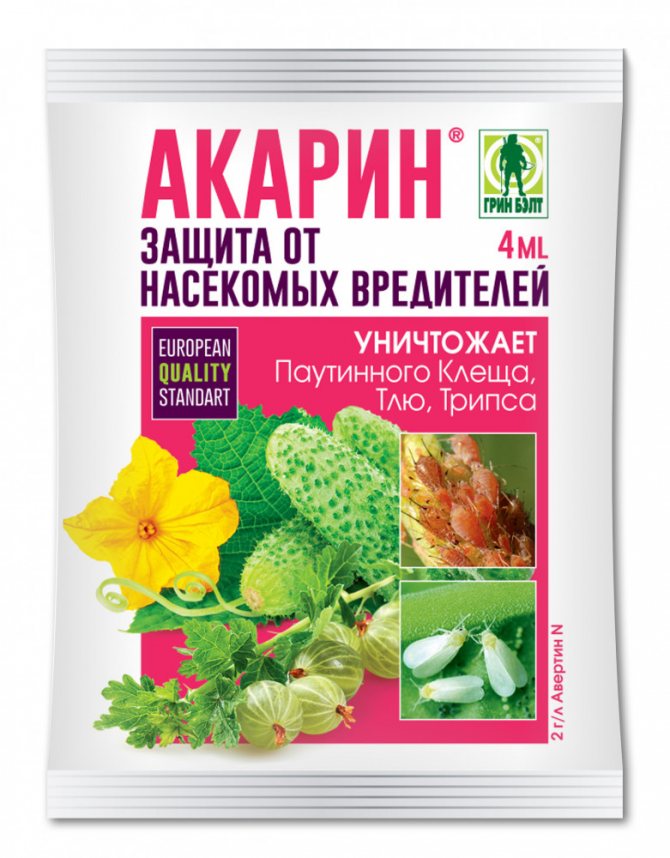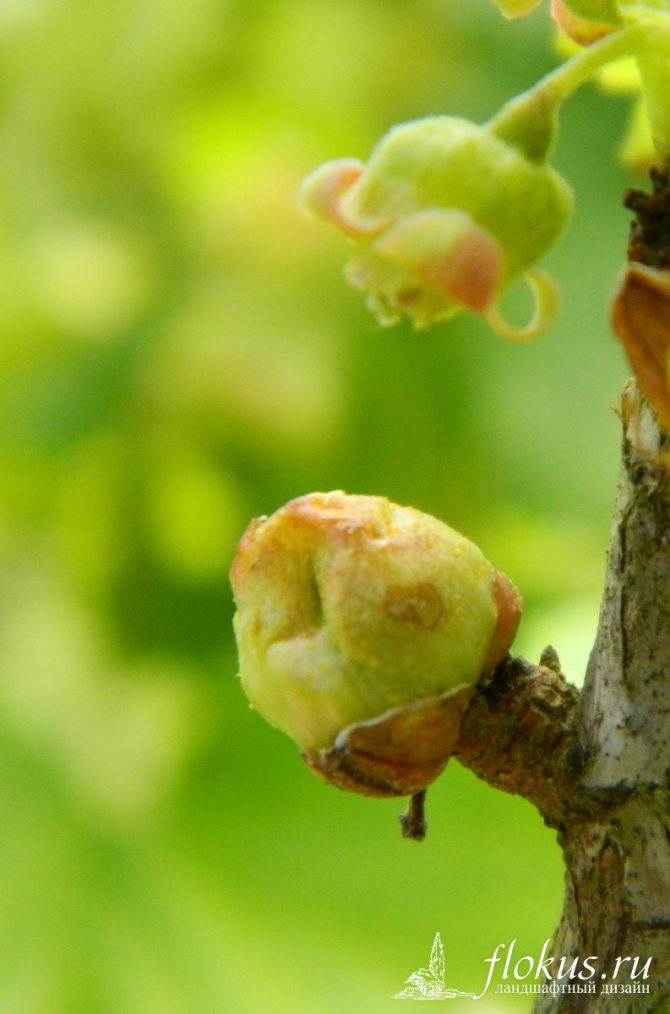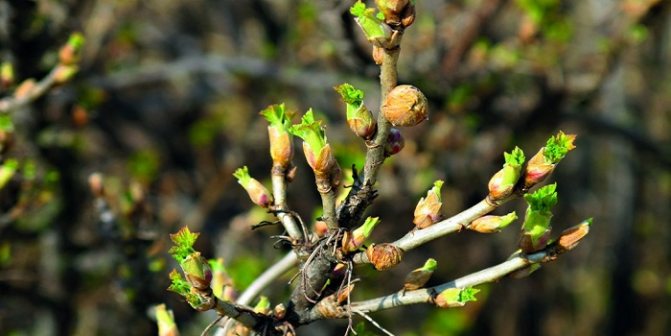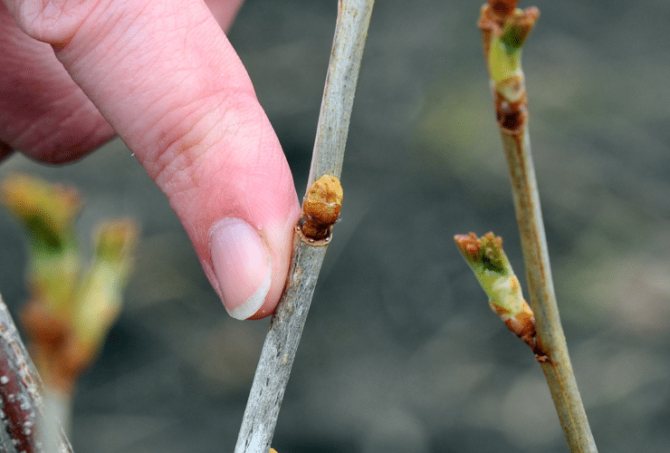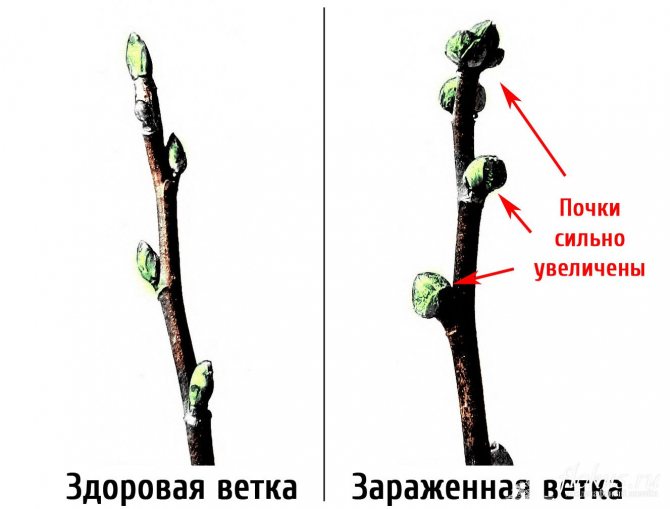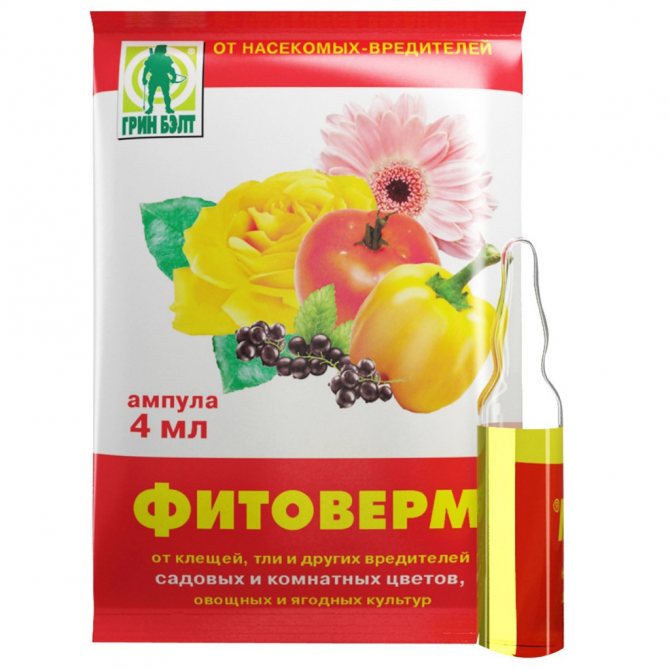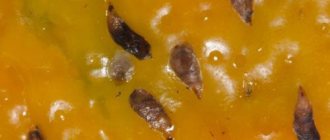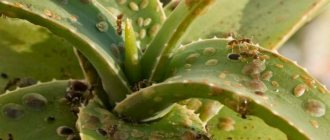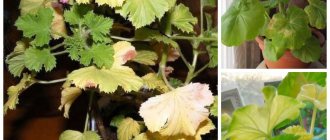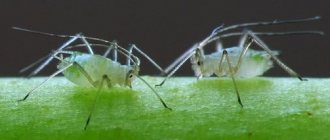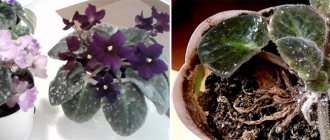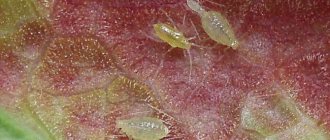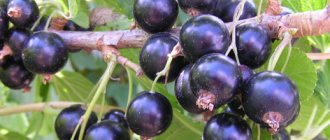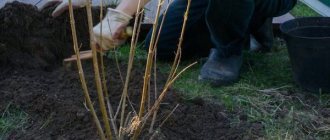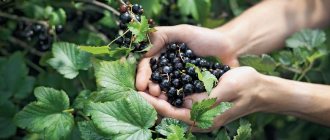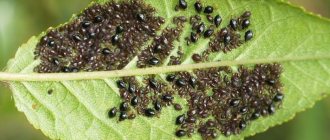Currant is a valuable berry, which contains a large amount of nutrients and trace elements. Therefore, it is not surprising that many summer residents and owners of private and suburban real estate grow tasty, juicy red and black berries on their plots. Like any plants, currants have their enemies. One of them is the kidney mite - a dangerous pest that can weaken the plant as much as possible and subsequently lead to its death. There is a bud mite on cherries and other horticultural crops. Before you find out what measures there are to combat the kidney mite on currants, you need to figure out what this parasite is.
The appearance of a kidney mite
The currant kidney mite looks like a tiny worm. Its body length is 0.2 mm, and its width is 0.04 mm. It is impossible to consider it with the naked eye. To get acquainted with the pest, you need to carefully study the photo of the kidney mite, enlarged tenfold. The entire development cycle of the pest takes place on the plant. In the first month of spring, the female lays eggs. They have an oval shape, which in the process of development acquire a milky white hue.
A bud mite emerges from its shelter on currants in the spring, when the first leaves and flowers appear. Individuals spread throughout the bush, populating the bark and leaf plates. Almost all kidney mites die. Only 1% of parasites survive, they choose new buds for permanent residence and continue to multiply. On one currant bush, bud mites can parasitize for five generations. Only for 1 time, the female is able to lay about 100 eggs.
On a note!
Parasites are carriers of viral diseases that greatly weaken the currant. The bush becomes the prey of barbel, stem glass, goldfish. By breaking the damaged kidney, you can see that it is completely filled with vitreous eggs. After about a week, larvae emerge from them.
What do currant buds look like when affected by a tick?
The easiest way to identify the pest is in the fall. Then the affected kidneys swell and differ markedly from the rest.
In the autumn, immediately after leaf fall, two types of buds can be distinguished:
- Healthy kidneys are round, slightly elongated. They do not lag behind in development and are covered with dense scales.
- Sick, deformed, round kidneys that are inflated by a large number of parasites. It is there that pests hibernate.

In spring and summer, affected kidneys can be distinguished by the following features:
- the tops of young shoots are deformed and change color;
- the leaf plate becomes stiffer, acquires a light green or yellow color, while the leaves become smaller due to depletion;
- young growth stops growing;
- berries do not ripen - they remain small and sour;
- fading of the growth of shoots.
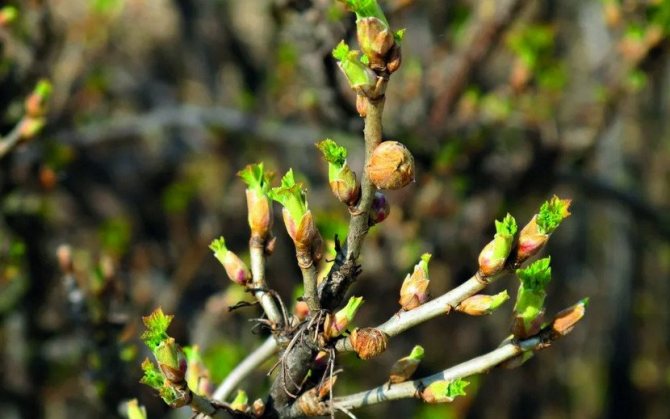

The currant bush is affected by viruses that ticks carry (witch's broom, leaf reversion, double flowers). In this case, the plant urgently needs to be cut and burned, since there is no treatment for such diseases.
Signs of infection in bushes
The kidney mite tolerates cold. At a temperature of + 5 ° C, the female already lays eggs. Thousands of larvae can appear from one currant bud.The presence of eggs can be seen by the size of the kidney, it becomes large, like a ball. This is the first sign by which the presence of a kidney mite is determined.
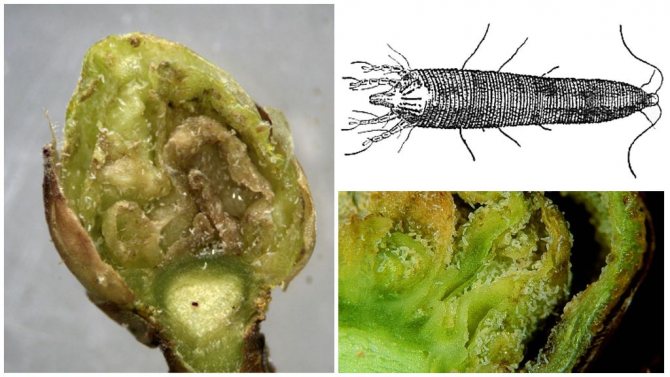

Kidney mite on currant
On a note!
Ticks under the influence of strong winds are transferred to nearby bushes. During their massive spread of parasites, it is possible to see with the naked eye.
You can find out about the presence of a tick at different times of the year by the following signs:
- In spring, the parasites feed intensively, multiply rapidly, affecting the buds of the currant. As a result, they do not sprout, and most often die off. When the first leaves begin to appear, 2 generations of pests are already present in the buds. They are cramped there, they go outside, precipitate new buds and young shoots. Parasites spread throughout the currant bush and move to a neighboring plant. Therefore, the flowering is insignificant and there are very few fruits.
- In summer, on black currants, it becomes noticeable that some shoots are curved, they are underdeveloped, and the bush itself takes on an unkempt shape. The color of the deformed leaves at the top becomes much lighter.
To prevent this from happening, it is recommended to process the currants in the spring, using special means for this purpose.
Causes of damage to currants
There are several different reasons why a kidney mite can harm currant bushes. These include:
- Drought and heat. Such conditions are most favorable for the reproduction of pests, therefore they are more actively spreading on fruit bushes.
- Lack of organic fertilizers in the soil... Due to a lack of nutrients, the plant weakens and is attacked by a tick.
- Infection with viruses from other crops. If diseased plants are not eliminated in a timely manner, they will transmit the infection to neighboring bushes. This attracts pests.
- Excess dust on the leaves... Lack of long-term irrigation leads to dusty plants, which contributes to the appearance of insects.


Methods for dealing with currant mites
Not everyone knows how to deal with a kidney mite on a currant competently. The use of pesticides during the period of mass reproduction of the kidney mite is prohibited. This is due to the fact that at this time the currant blooms violently, the berries are tied. Many drugs are dangerous to insects that pollinate the plant. Therefore, the treatment of black currant diseases must be started in the spring and after the harvest.
To get rid of parasites on currants, different methods are used.
Biological
This method consists in collecting kidneys affected by a kidney mite, since it is in them that a huge number of pests are located. They should be removed until such time as they begin to burst. The procedure is quite laborious, since it is necessary to remove all infected buds by carefully examining the currant bush. It must be carried out with gloves. The collected kidneys are burned or poured over with boiling water. This method does not give a 100% guarantee of getting rid of parasites. They can be found in other kidneys, which have a normal appearance, just the number of pests in them is not so large.


Kidney mite on currant
On a note!
Some gardeners use boiling water to kill bud mites on currants. The procedure is carried out in the spring. It is important to do it right. After the water boils, it should be poured into a watering can (the temperature will drop by this time) and, raising the device 15-20 cm above the shoots, process the bush. The tick dies at a temperature of + 45 ° C, it does not harm the plant.
Biological preparations
For people and their environment, biological products are less dangerous than pesticides. They are quite effective, but they have a short duration of action.Most of the products on the market belong to the third class of safety. Biocarcids are used to escape from pests in spring, when the air temperature reaches + 16 ° C. The following drugs have shown good efficiency:
- Akarin. Inexpensive product, available in ampoules. The cost is from 14 to 20 rubles. To process currants, dilute 20 ml of the drug in 1 liter of water and spray the currant bush with the resulting solution. After 3 days, the procedure should be repeated.
- Bitoxibacillin. The tool is available in the form of powder in different packaging, so the price ranges from 22 to 42 rubles. To obtain the composition, it is necessary to dilute 100 g of powder in a bucket of water. Sprayed 2-3 times per season, taking a week break between procedures.
- Fitoverm. The cost of a package containing a 2 ml ampoule is about 20 rubles. When destroying parasites, the drug shows good results. There is a table on the package according to which the dosage should be selected.
Important!
Manufacturers of drugs recommend observing safety measures: wear overalls, gloves. Strictly follow the instructions that are attached.
Chemicals
Not all kidney mite chemicals are suitable for controlling this parasite on currants. Some of them belong to the third class of safety. The most effective are highly hazardous acaricides and insectoacaricides of the second class. It is recommended to use them in rare cases, strictly observing the precautions.


Kidney mite insecticides
You can treat currants for ticks with the help of such drugs:
- Kontos. For spraying, dilute 1 ml of the product in 3 liters of water. The result is visible 10 days after treatment. Price - 129 rubles.
- Vertimek. To destroy kidney mites, mix 1 ml each of Vertimek and Envidor, or instead 1 g of Nissoran, dilute in 1 liter of water. Spray the plant with the resulting mixture. The cost of the drug is 35 rubles.
- Envidor. To obtain a solution, dilute 2-3 ml of the product in five liters of water. The price of the drug is 47 rubles.
- Nissoran. The funds are available in powder form, the cost of packaging is 110 rubles. Possesses a wide spectrum of acaricidal action. To prepare the mixture, dissolve 1 g of powder in 1 liter of water.
After picking currant berries, it is recommended to process the bushes again using stronger preparations: Nitrafen, Bi-58, Kleschevit, Antiklesch, Phosphamide, etc.
Experts recommend alternating acaricidal agents; treatment must be carried out strictly following the instructions. Wear eye and hand protection when spraying.
Feedback:
I use Akarin. An excellent drug. It is effective against many pests, including good results in the destruction of gall mites on a pear.
Alexandra, Tula
Folk remedies
To combat the kidney mite on currants, gardeners use folk remedies:
- Dandelion root infusion. To prepare the mixture, you need 50 g of leaves, chop 200 g of peeled roots, pour 10 liters of water and leave for 3 hours.
- Garlic infusion. To prepare it, you need to chop 200 g of garlic, pour 10 liters of water, insist for several hours, strain and spray the currant bushes.
- Mustard tincture. Mix mustard powder in an amount of 200 g with 10 liters of water, leave for 12 hours, filter the resulting mixture and wash the currants with it from ticks.
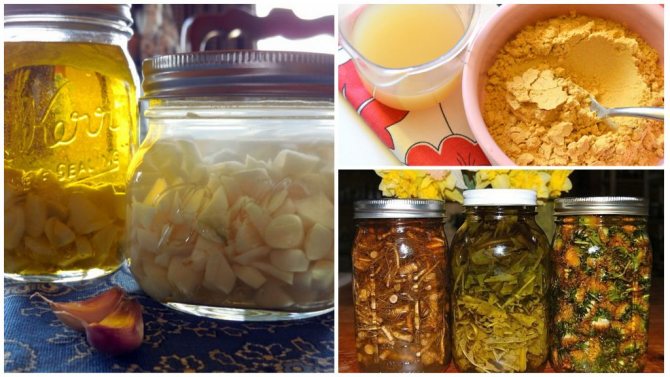

Folk remedies for the fight against kidney mites
On a note!
Kidney mites do not like the smell of onions and garlic. Therefore, they can be planted next to currants. But it should be remembered that if chemicals were used to kill the parasites, onions and garlic should not be eaten.
Feedback
To destroy pests of currants, I use garlic infusion every year. I do it in spring and summer. The result is excellent.
Nina, Kursk
What harm does it do
The level of harm of the kidney currant mite is the highest among the parasites of horticultural crops. During the spring and summer seasons, the female tick displays up to 40,000 harmful ticks.
Powdery mildew on currants: control measures
The larvae develop in the kidneys, where they are well protected from natural disasters, which complicates the process of destroying pests. If you do not take measures to combat the kidney currant mite, then the bushes of the berry plant can die in one season.
The parasite is more dangerous than the spider mite. When black currant bushes are infected with a spider mite, the leaves are entangled in thin white threads (cobweb). It is necessary to fight the pest, as well as with the kidney mite, since the vital activity of the spider mite also threatens the plant with death.
Prophylaxis
In order to prevent infection of currants with a kidney mite, it is recommended to carry out preventive measures.
- For planting, use non-contaminated raw materials.
- Remove weeds in time.
- In early autumn and late spring, inspect bushes for tick infestations. The affected kidneys must be removed.
- Use biological and chemical preparations according to the instructions.
Practitioner gardener G.A.Kizima recommends cutting the bushes without fail and in a timely manner. In black currants, the black branches must be trimmed. In red and white varieties, the tops do not need to be cut, only old branches and those that grow inside the crown are removed.
Sulfur chemicals
Among the chemicals for insect control are colloidal sulfur and lime-sulfur broth (ISO). Currant bud mite, control measures which can have a negative effect on the bush, does not tolerate sulfur, as it is sensitive to this element. It is applied in the form of a solution of 10 g per 1 liter of water. She treats the bushes during the beginning of flowering and after its end. The second time, you can make a less strong solution. Although this year the harvest may be spoiled, but next year it will recover.
ISO is used in the same way. The solution for the first spraying is 2%, and for the second - 1%. When spraying, you need to carefully treat all affected and healthy branches, as well as the ground at the roots of the plant. Some drugs can be used before the kidney swells. You must read the instructions so as not to be mistaken with the proportions.
In addition to fighting the mite, sulfur increases the immunity of currants against fungal diseases. In some plant varieties, preparations with its content cause leaf fall. You need to know about this before spraying.
How to identify
It is easy to recognize a kidney mite by its large buds, the size of which can reach a large pea. This is due to the fact that up to 8 thousand insects can simultaneously be in the embryonic shoot. If a kidney is cut open, it will look like a bursting cabbage head. Hiding in the rudiment, insects calmly endure the winter and lay eggs in the spring. For a full season, each female tick gives up to 5 generations of insects, laying up to 8 thousand eggs at a time. Having killed 1 currant, the insect moves to other garden crops and affects the entire area. The pest moves from bush to bush with the help of wind, birds and insects. But you can bring it to your garden along with currant or gooseberry seedlings.
It should be remembered that the kidney mite is a carrier of viruses, for example, terry. The death of a currant bush can be prevented if it is regularly treated with biological or chemical preparations.
General principles of parasite control
Getting rid of the parasite is quite difficult, since its life is concentrated inside the kidney.The most sure thing is to destroy many larvae during their resettlement with the help of poisonous means, but since the period of their resettlement coincides with the time of flowering and budding, this cannot be done, since beneficial pollination occurs. Therefore, the currant mite is a dangerous pest and in order to get rid of it, all procedures to combat it should be carried out after the harvest season or before the flowering process.
Tick control consists of the following methods:
- folk;
- biological;
- chemical;
- agrotechnical;
- preventive.
In addition, nature itself gives a chance to fight parasites in a natural way, each pest has its own enemies. For example, the following insects can help get rid of kidney mites:
- hover fly;
- encarsia;
- chalcides;
- lacewing;
- carnivorous;
- carnivorous bug;
- ladybug.
The use of chemicals and other drugs to destroy the kidney currant mite
The following methods of killing the kidney currant mite are not safe for the owner, his family, domestic animals and birds. Therefore, before starting to use pesticides for the destruction of a tick, it is necessary to carefully prepare, study the action and aftereffect of the chemical, its effectiveness, repeated use and technical recommendations for implementation according to special literature.
Frequency of treatments
If the requirements of the instructions for use of the drug are violated, its effectiveness can be reduced to zero.
The development cycle of a kidney currant mite depends on external temperatures. The first active development of the larvae of the kidney currant mite begins at an air temperature of +10 .. + 12 ° С, but their release and resettlement may occur in 25 days, until the air warms up to + 18 ° С. The higher the air temperature rises, the shorter the period of development from the egg of the carnivorous larva, which will infect new buds on the native and neighboring bushes (Table 1).
Table 1. Intervals of treatments with drugs against kidney currant mite
| Air temperature, ° С | Development period, days | Treatment interval, days |
| +12..+18 | 25-30 | 8-12 |
| +20 | 20 | 10 |
| +25 | 10 | 5 |
| +30 | 6 | 3 |
The number of treatments in the temperature range must be at least three:
- the first treatment destroys overwintered adult female kidney currant mites and hatched larvae (resistant to cold). Some of the eggs do not have time to go through the development cycle;
- with the onset of heat, the second wave of larvae ends the development cycle. If you cannot withstand the interval of treatments (late with the treatment of bushes), the larvae have time to turn into adult ticks and lay a second clutch of eggs.
- the third treatment is belay. Surviving young female kidney currant mites can lay eggs, which will give a new outbreak of infection of the bushes.
It is especially important to record the first migration of the larvae of the kidney currant mite. They can be seen with the naked eye during this period. After processing the bushes, further monitor the temperature and observe the processing interval. For example: the temperature is maintained in the range of + 20..25 ° C - the treatment interval is 8-10 days.


Currant buds affected by a currant kidney mite. <>
Protect the environment!
The oldest way to destroy pests was invented by nature itself. Each pest has natural enemies, entomophages, which effectively reduce the number of plant pests. Be attentive to small workers of orchards and berry fields. When using chemicals, remember that you are also destroying useful fauna.
Ticks are effectively destroyed by beneficial insects:
- ladybug (stethorans);
- carnivorous bug;
- carnivorous tick;
- lacewing;
- chalcids (parasitic insects);
- phytoseiulus;
- encarsia
- hover fly and others.
More details about herbivorous mites can be found in the article "Mites are herbivorous garden pests".
Dear Readers! You have familiarized yourself with the main methods of destroying the kidney currant mite, which causes significant harm to berry crops. Not all methods are harmless to humans, animals, beneficial insects. Before using any of the drugs suggested in the article or purchased, carefully read its action and decide whether its use is right for you. The choice is yours. Offer us your ways to protect berries from this and other pests in the comments to this material.
Recommended biological products
How to treat currants from a tick in the spring? These drugs include bioacaricides, developed on the basis of bacteria and fungi that are not dangerous to the human body. Despite the positive aspects of the drugs and their effectiveness, the use of bioinsectoacaricides and bioacaricides still has a number of limitations. The highest result can be achieved when using funds at temperatures above 15 degrees, useless in cold and windy weather. Bioacaride drugs include:
How to get rid of a tick on a currant? The use of funds occurs depending on the temperature, at intervals, until the end of flowering, immediately after harvesting. It is necessary to observe the alternation of drugs that combine well with biofungicides. When using new drugs, it is necessary to check their compatibility, the dosage and method of dilution can be read on the packaging. To achieve the maximum effect and exclude the death of the plant, you must strictly adhere to the instructions.
How to get rid of a tick on currants in the fall:
Agrotechnics.
To avoid the appearance of pests on the currants, it is necessary to maintain cleanliness, that is, regularly remove weeds around and inside the bush. In the fall, you need to cut off the currant bushes, and after that the cut off shoots must also be removed from under the bush.
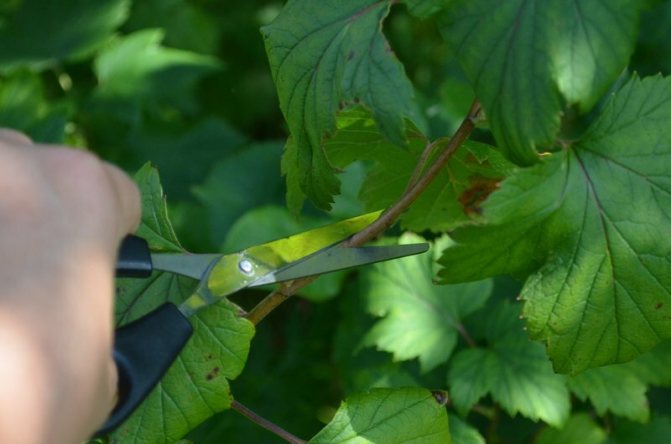

Currant pruning.
You can keep the bush healthy and increase yields by applying mineral fertilizers. Top dressing should be carried out in the fall so that the currants have time to lay flower buds.
Folk remedies tea, garlic
To get rid of the currant from the pest, they turn to folk remedies: tea and garlic. Garlic is often used in pest control treatments as it repels many insects.
Garlic can be planted next to currant bushes as a preventive measure. Kidney mites cannot tolerate its smell and cannot reproduce near this plant.
However, if you are chemicalizing currants, the garlic growing next to them should not be used for cooking. With the help of garlic, already infected plants are also rid of parasites.
Garlic broth is prepared: 100-200 grams of garlic, rid of the skin, is passed through a special crusher or finely chopped, and then poured with 10 liters of boiling water. The broth is thoroughly mixed and proceeds to the processing of the shrub.
Using a spray bottle, the liquid is sprayed onto the black currant. The procedure can be performed only before or after flowering, because garlic can disrupt the pollination process. To combat the pest, decoctions of tobacco, walnut or dandelion are also suitable.
Tea broth is required before rooting young cuttings. 50 grams of tea is brewed in 25 liters of boiling water. The solution is allowed to stand for a day so that it does not burn young currant twigs. Cuttings are placed in this solution for three hours.
Preventive actions
Prevention of the appearance of a kidney mite on currants begins from the moment the planting material is acquired. When buying cuttings or seedlings, it is imperative to carry out a visual inspection. Do not take seedlings from infected bushes.Before planting, it is imperative to heat-treat the seedlings by keeping them in water heated to 40-45 ° C for 15-20 minutes. A good preventive measure is to soak a seedling or a rooted cuttings in a disinfectant solution for a day. To prepare it, add colloidal sulfur and agrovertin (40 and 10 g, respectively) to 1 bucket of water.
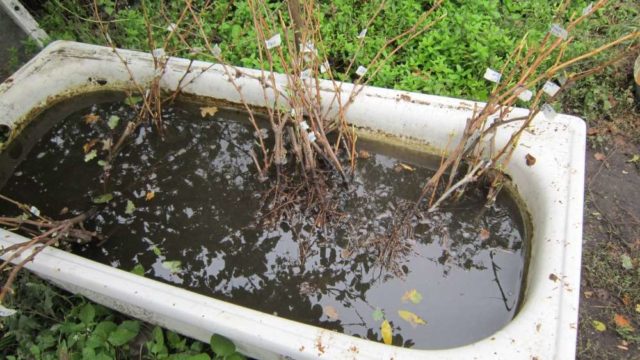

After planting seedlings in open ground and in subsequent years, you need to regularly cut the bushes, prevent them from thickening, remove dry and broken branches. All observed mite buds on currants must be immediately cut off and destroyed. Garlic can be planted in the aisles. The tick does not tolerate its smell. In early spring and autumn, the bushes should be shed with hot water.
Important! In order to get rid of a bud mite on currants, it is not necessary to process individual bushes, but all plantings. The pest can also settle on other berry bushes, for example, on gooseberries.
Use of pesticides
The fight against a kidney mite on currants in the spring can take place with the help of chemicals intended for the treatment of shrubs. Since the parasites are arachnids, insect-acaricidal or acaricidal preparations are used to combat them. It is worth remembering that improper use of a chemical can negatively affect health. Therefore, it is required:
- when processing a garden in autumn and spring, alternate preparations to exclude addiction;
- carry out processing according to the instructions;
- while using the product, protect the skin and eyes with gloves and glasses.
Shrub processing should be carried out at the most unfavorable time for ticks - during the relocation of larvae. At the stage of blooming, the larvae go out into an open space, this movement lasts about 20 days. It is during this period that the processing of currant bushes should be carried out.
To destroy a tick on black currant, use the following acaricidal agents:
The second stage of processing the garden takes place after harvesting, for this, stronger means are used:
Preparations for spring treatments from currant mites
For treatments in the spring, the following acaricides are used:
- Forbid 4F;
- Endidor;
- Aktelik;
- Vertimek;
- Contos.


In addition, sulfur-based preparations are allowed in the spring. Colloidal sulfur is suitable for this, the recipe on the basis of which is prepared as follows:
- put 10 g of sulfur in a bucket of water;
- add 75 g of malofos there;
- mix the composition.
The ready-made solution is used to spray the bushes and the soil around them.
Important! The first treatment of ticks at the time of their mass exit from the kidneys is of increased importance.
At the same time, currant leaves begin to bloom, and flower buds open. The following treatments are duplicated after 8-10 days.
Resistant varieties
The best way out of the vicious circle of the annual fight against the pest is to lay new berries, using varieties resistant to this pest.
Learn about caring for black currants, red currants, white currants and golden currants.
Black currant:
- Irmen and Memory of Michurin;
- "Early Potapenko" and "In Memory of Potapenko";
- "Nightingale Night" and "Belarusian Sweet";
- "Minx", "Sevchanka", "Riddle";
- Leningradskaya Sweet and Leningrad Giant;
- "Kipiana" and "Oryol Serenade";
- "Nara", "Otradnaya", "Chernysh";
- Black Pearl and Vigorous.
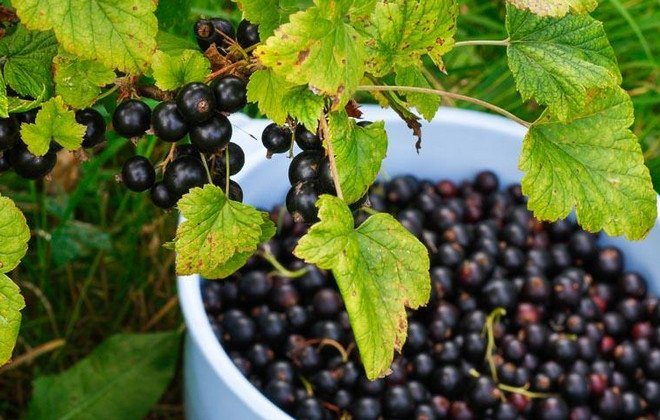

Did you know? Berry got its Russian name from the word
«
stench
»
which means
«
smell
»
(now
«
stench
»
associated with an unpleasant odor, but our ancestors had it differently), since the aroma of currants, especially black, is quite noticeable due to the high concentration of essential oils.
Red currants:
- "Beloved";
- "Red Cross";
- Jonker van Tets;
- "Cherry Viksne";
- Chulkovskaya;
- "Ilyinka";
- "Ural Beauty";
- "Lights of the Urals";
- "Scarlet Dawn".
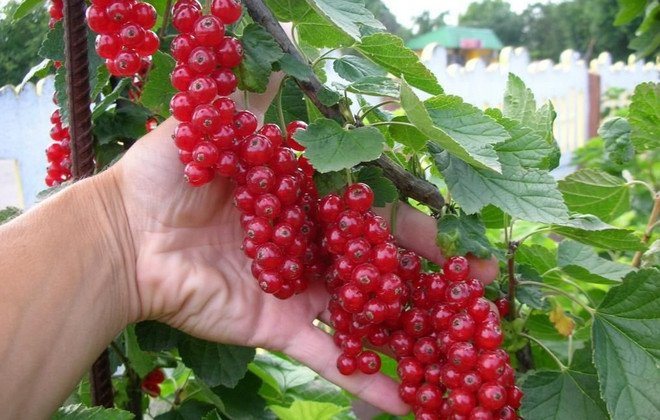

White currant:
- "Snezhana";
- The White Fairy;
- "Bayana";
- "Squirrel";
- "Versailles White".
In nurseries and specialized gardening shops, you can buy currant seedlings selected from various countries (Russia, Ukraine, Poland). The gardener needs to choose those that are most suitable for the given climatic conditions.
We must not forget that over time, even the most productive and disease-resistant variety of currant gradually loses its qualities. The immunity of the old plant is weakened by age, and it may well be inhabited by the bud currant mite.
